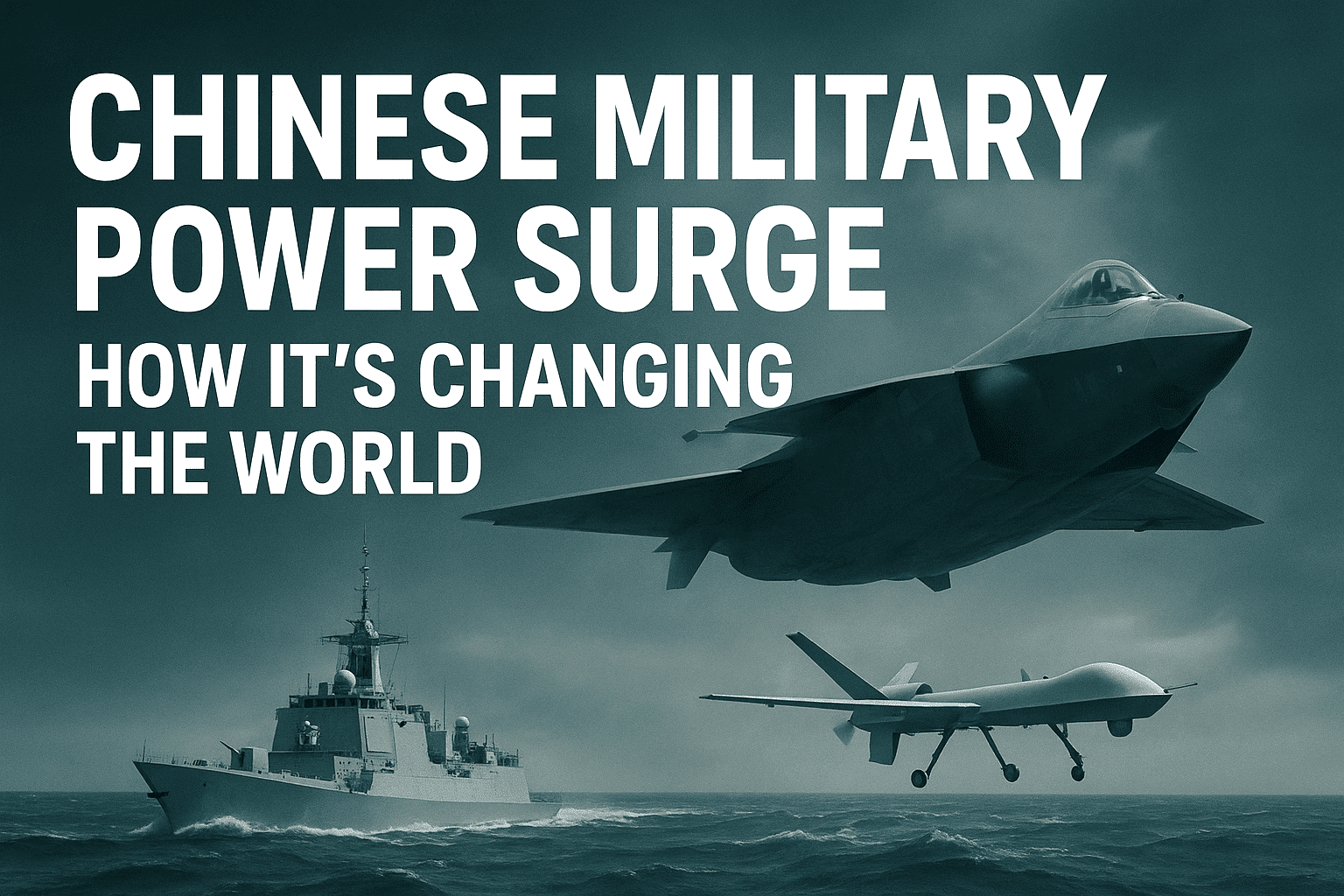Chinese military power has entered a new era, moving far beyond its past reputation for outdated, imitation hardware. Once reliant on Soviet and Russian designs, Beijing now produces advanced homegrown systems that are influencing global conflicts, reshaping strategic balances, and challenging established powers.
From Soviet Imitations to Technological Edge
In the 1990s and early 2000s, Chinese military power was modest, with systems largely based on old Russian technology. That changed as China’s economy boomed and state-run defence firms invested heavily in research and development.
Today, China fields stealth fighters like the J-20, which recently flew undetected through the Tsushima Strait — a move that highlighted the vulnerability of US, Japanese, and South Korean radar networks.
Rise of Advanced Weaponry
China’s advancements are not limited to stealth technology. Its drones now rival the world’s best, and hypersonic missile programmes are progressing rapidly. Naval drills in the Pacific — such as the unannounced exercises off Australia — have showcased Chinese military power and its reach. These manoeuvres disrupted flights in the Tasman Sea and brought Chinese warships close to sensitive bases, including the US B-2 stealth bomber facility at Amberley.
Chinese Arms in Global Conflicts
Beijing’s weapons are increasingly present in active warzones. In the Indo-Pakistani conflict earlier this year, Pakistan used Chinese-made J-10C fighters to down Indian Rafales. This combat success drew interest from countries like Egypt and Nigeria, while Middle Eastern buyers, including the UAE, have expanded their purchases of Chinese drones and jets.
Even Iran has shown interest, with military officials photographed in Chinese fighter cockpits. Such deals could alter regional balances, particularly in the Middle East, where Chinese military power might enable Iran to challenge rivals like Israel.
Lessons from Past Weakness
The roots of this transformation date back to humiliating episodes like the Third Taiwan Strait Crisis in 1996, when US carrier groups easily outclassed Chinese forces. Determined to modernise, China boosted its defence budget by around 10% annually, implemented sweeping reforms, and focused on developing indigenous capabilities. These steps laid the groundwork for today’s technologically advanced Chinese Military Power Surge: 7 Shocking Ways It’s Changing the World
Technology and Strategy Combined
China’s military modernisation parallels its wider tech ambitions, as seen with AI breakthroughs like the DeepSeek chatbot. The J-36 — a next-generation stealth fighter integrated with AI and drone swarm control — represents the fusion of technology and combat capability. Such systems could redefine aerial warfare in Asia and beyond.
Challenging the Global Order
From Ukraine to the Middle East, many nations are reassessing traditional defence suppliers. China’s combination of affordability, advanced technology, and political alignment with non-Western states makes it an attractive partner. As Chinese military power grows, it not only boosts Beijing’s global influence but also places increasing strategic pressure on the US and its allies.
Read Also :-
- India’s Semiconductor Revolution: The Brain Behind Modern Electronics
- India’s Space Program NISAR 2025: ISRO Milestones and Future Missions

